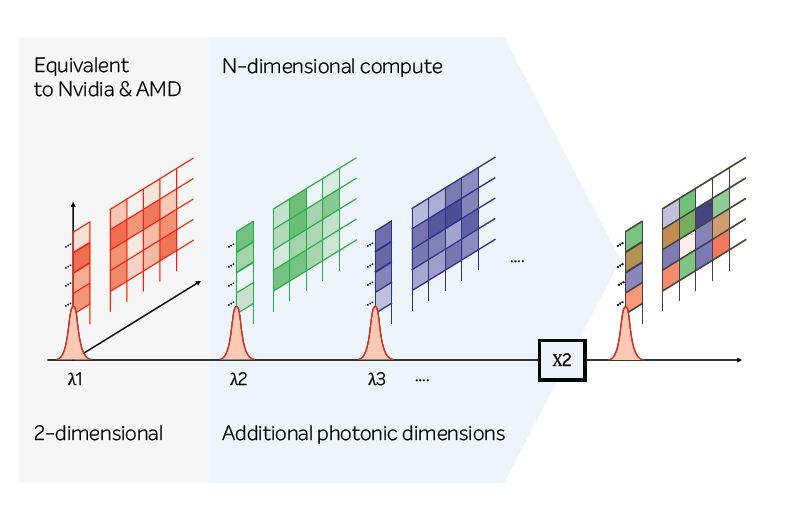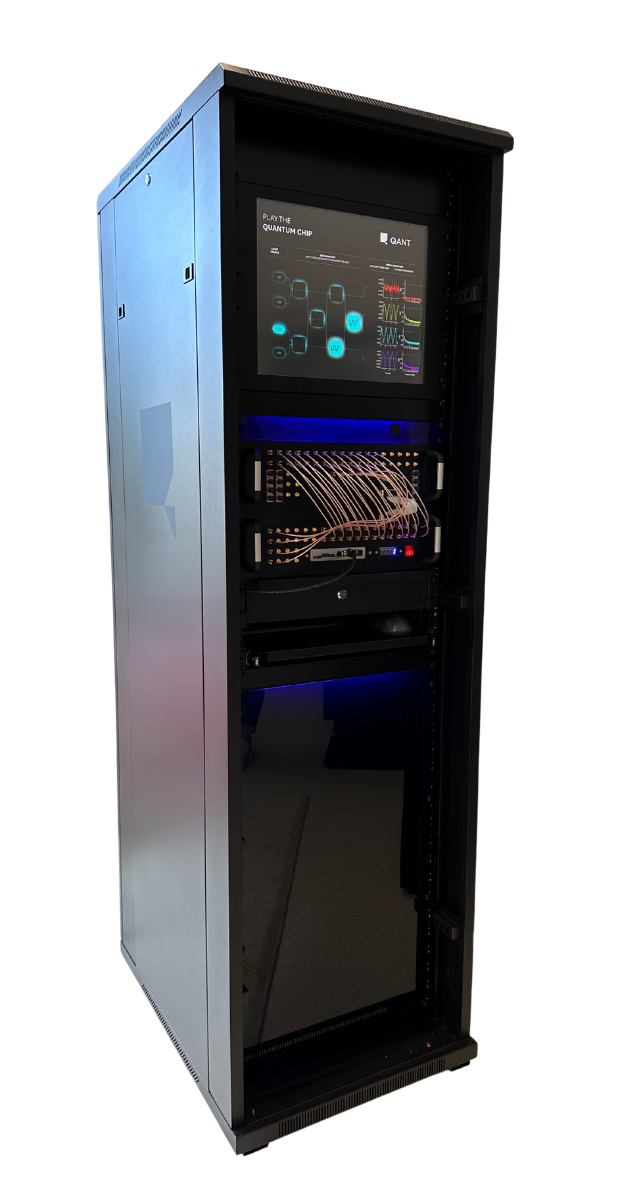Startseite » Photonic Computing
Taking data processing to new levels by accessing the parallelism of light
Todays computing systems and computer chips are reaching their physical limits. With their 2-dimensional electronic grids, the performance growth of traditional computing will plateau and consume too much energy – limiting the future of Next-Gen AI, Hybrid Computing, and Neuromorphic Computing. A paradigm shift to Native Computing is neccessary.
Native Computing means to natively implement efficient matrix-vector multiplications, on which artificial intelligence bases its potential. By utilizing the parallelism of light, processing is taken to n-dimensional photonic realms. This performance boost will push the frontier of computing and allow AI applications that are out of reach with today’s means.
Our innovations are practical solutions for real-world challenges. We revolutionize High-Performance Computing HPC and transform the landscape for all who rely on complex matrix vector multiplication and next-generation AI inference.
Photons natively support parallelism and access to additional photonic dimensions.
Access to these additional photonic dimensions allows us to go far beyond 2d electronic lattices. This will shift the boundaries of computing and allow AI applications that are unattainable with today’s means.

Native computing enters as the game-changer that holds the potential to reshape the way we process data and analyze and solve complex problems – in an energy-efficient way. It transcends the limitations of classical computing systems, opening up new horizons for discovery and innovation in artificial intelligence – making the world smarter.
Q.ANT serves as the one-stop-shop from chips to application with several main advantages:
Q.ANT relies on its own technology platform Para.Digm for photonic chips and photonic integrated circuits – PICs. The central components of the chips are optical waveguides and various building blocks, which enable the control of light and in a highly integrated form. In this system, very thin layers of lithium niobate are applied on silicon and then structured into optical waveguides. We believe that lithium niobate – LNOI – is the key to future photonic computing.
PICs based on LNOI show several main advantages:
Photonic processors offer several advantages in the field of information processing:

These guide tiny particles of light (photons) through conductive paths.
This beams classical light waves into the waveguide.
The photons are manipulated through the building blocks on the chip, as i.e. modulators or resonators.
This occurs on the waveguide at the narrow points, also called beam splitters. It means that photons can pass into the other waveguide.
This is used to read out the information that the photons carry.
These control the interaction of photons and calculate previously unsolvable tasks.
At the heart of photonic processors are photonic chips that perform calculations. In this process, photons deliver huge computing power.
Research cooperation between federal company and Stuttgart-based high-tech start-up Stuttgart, 27. June 2023 – Quantum chips working with light may play a central role on [...]
Stuttgart, June 21, 2023 – Stuttgart-based start-up Q.ANT and the Institute for Microelectronics Stuttgart (IMS CHIPS), today signed an agreement to jointly manufacture quantum chips. [...]
Q.ANT has accomplished the next milestone towards the development of its photonic quantum computer. At the heart of Q.ANT’s approach to photonic quantum computing is [...]

SVP Native Computing
I look forward to discussing the potentials of Photonic Computing with you.
Q.ANT GmbH
Handwerkstr. 29
70565 Stuttgart
Germany